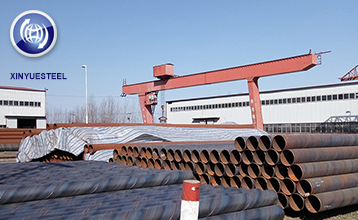Later, China's steel import and export may show a "double high" pattern
Apr. 26, 2021
According to the latest statistics from the General Administration of Customs, my country exported 7.542 million tons of steel in March, a year-on-year increase of 16.5%; and imported 1.322 million tons of steel, a year-on-year increase of 16.3%. In the first three months, my country exported 17.682 million tons of steel products, a year-on-year increase of 23.8%; cumulative imports of steel products were 3.718 million tons, a year-on-year increase of 17.0%.
The most concerning is that my country's steel exports in March increased by 2.658 million tons compared with February, an increase of 54.4%, setting a new monthly high in steel exports since April 2017.

In the author's opinion, with the recovery of my country's steel exports, my country's steel imports and exports may show a "double high" pattern in the later period. The "first highest" is reflected in volume: the total volume of steel imports and exports will remain at a high level; the "second highest" is reflected in the growth rate, and steel imports and exports will maintain a relatively high growth rate throughout the year. The main reasons are as follows:
First, in the context of carbon peaks and carbon neutrality, my country’s main steel-producing regions have normalized high-pressure environmental protection policies, resulting in a phased decline in the supply of primary steel products such as billets and strip steel. Under this circumstance, overseas primary steel products flooded into the domestic market. This can be seen from the recent large exports of Vietnamese steel billets to China.
The relevant person in charge of the industry association has previously stated that it encourages the increase in the import of primary products such as steel billets and gives full play to the role of the import market in ensuring the supply of the domestic market. The author believes that the import of primary steel products will be normalized in the future, which will further promote the growth of my country's total steel imports.
Second, the price difference between domestic and foreign markets provides favorable conditions for domestic steel exports. With the recovery of demand in overseas markets, the price of international steel products has rebounded significantly, and the price gap with domestic steel products has further widened. Take HRC as an example. At present, the mainstream HRC price in the U.S. market has reached US$1,460/ton, equivalent to RMB 9,530/ton, while the domestic HRC price is only about 5,500 Yuan/ton. Because of this, the export of steel is more profitable. The author predicts that steel companies will speed up the scheduling of export orders in the later stage, and the export volume of steel products will remain high in the short term.
At present, the main uncertainty factor is the adjustment of the steel export tax rebate policy. When this policy will be implemented is currently undecided. However, the author believes that it is unlikely that the steel export tax rebate will be “cleared” directly, but the “fine-tuning” from the current 13% to about 10% may be a high probability event.
In the future, the structure of domestic steel export products will move closer to high value-added products, and steel exports will enter the “three highs” stage of “high quality, high value-added, and high volume” to hedge the cost impact of tax rate adjustments.
Especially the export volume of special steel products will further increase. The data shows that of the 53.68 million tons of steel exported by my country in 2020, bars and wires accounted for 12.9%, angles and section steels accounted for 4.9%, plates accounted for 61.9%, pipes accounted for 13.4%, and other steel products accounted for The ratio reached 6.9%. Of this, 32.4% belong to special steel. The author predicts that in the future, under the influence of the adjustment of the export tax rebate policy, the proportion of domestic special steel products exports will further increase.
Correspondingly, steel imports will show a pattern of "a rapid increase in the proportion of primary products imports and a steady increase in high-end steel imports". As the domestic research and development of high-end steel continues to increase, the proportion of high-end steel imported steel may decline. Domestic steel companies must fully prepare for this, optimize product structure in time, and seek development opportunities in the changing pattern of import and export trade.



